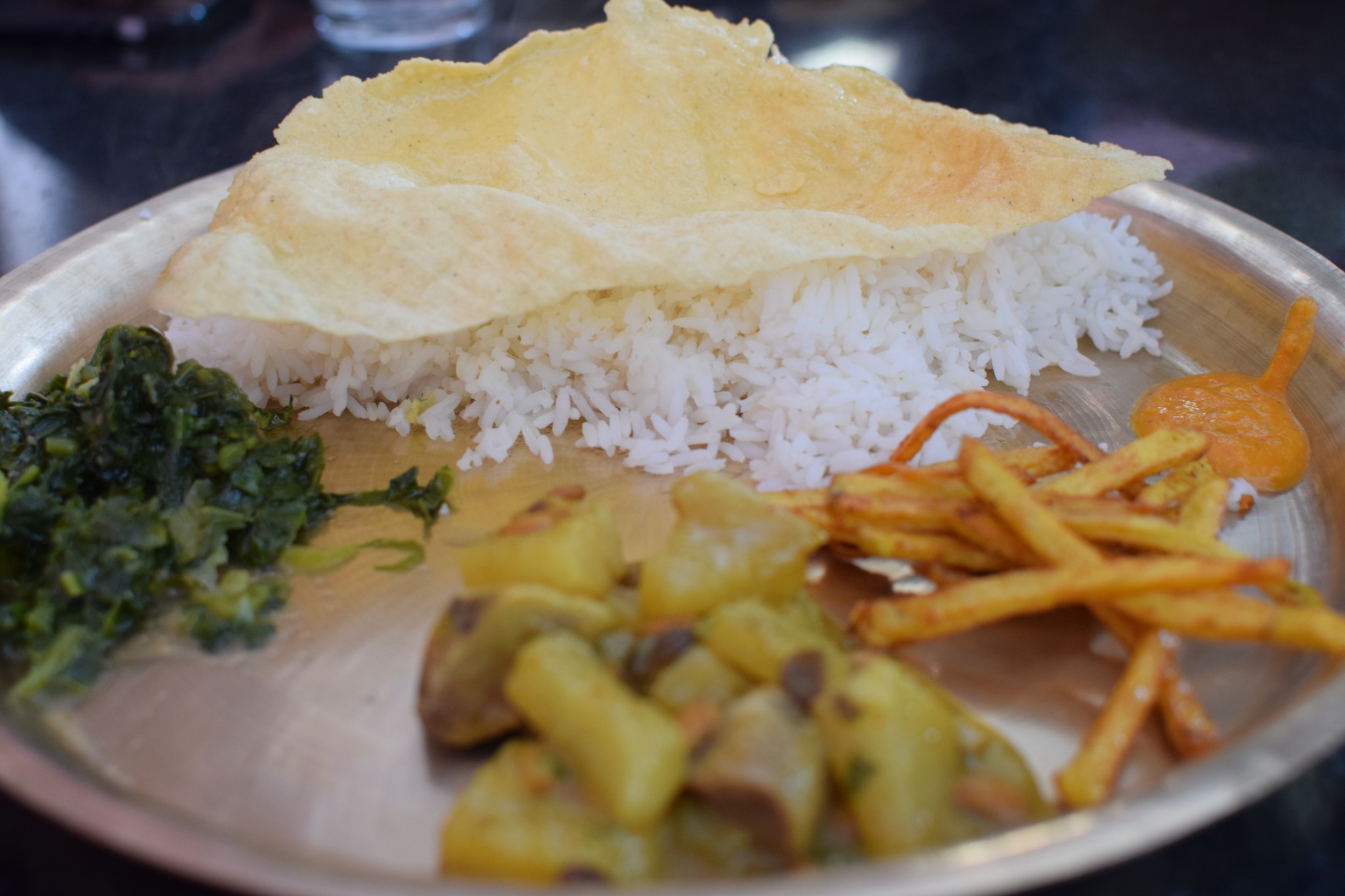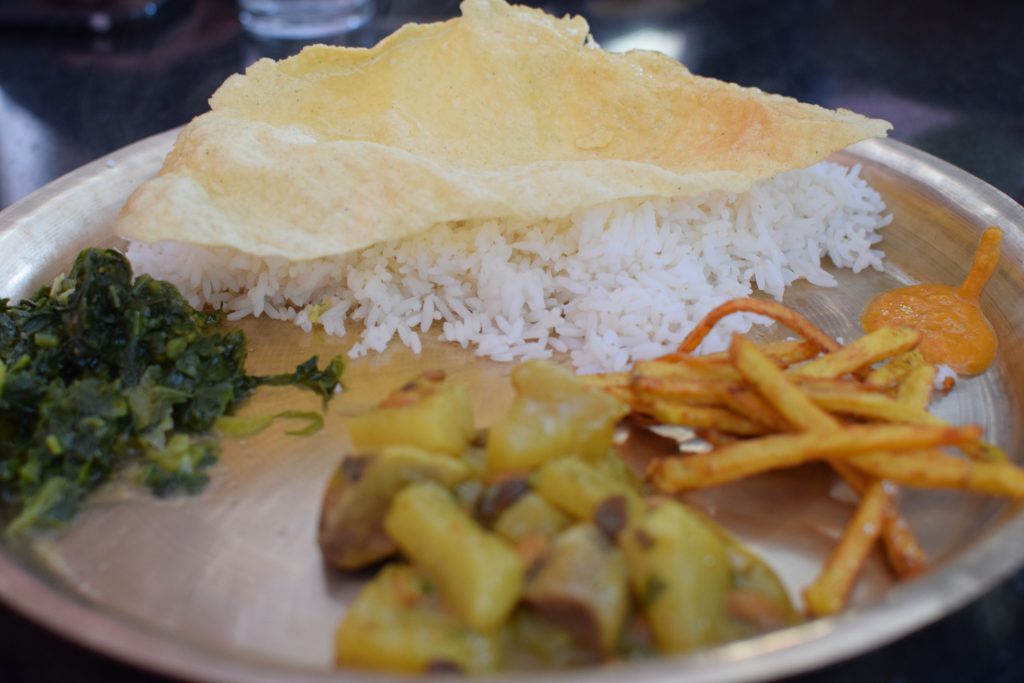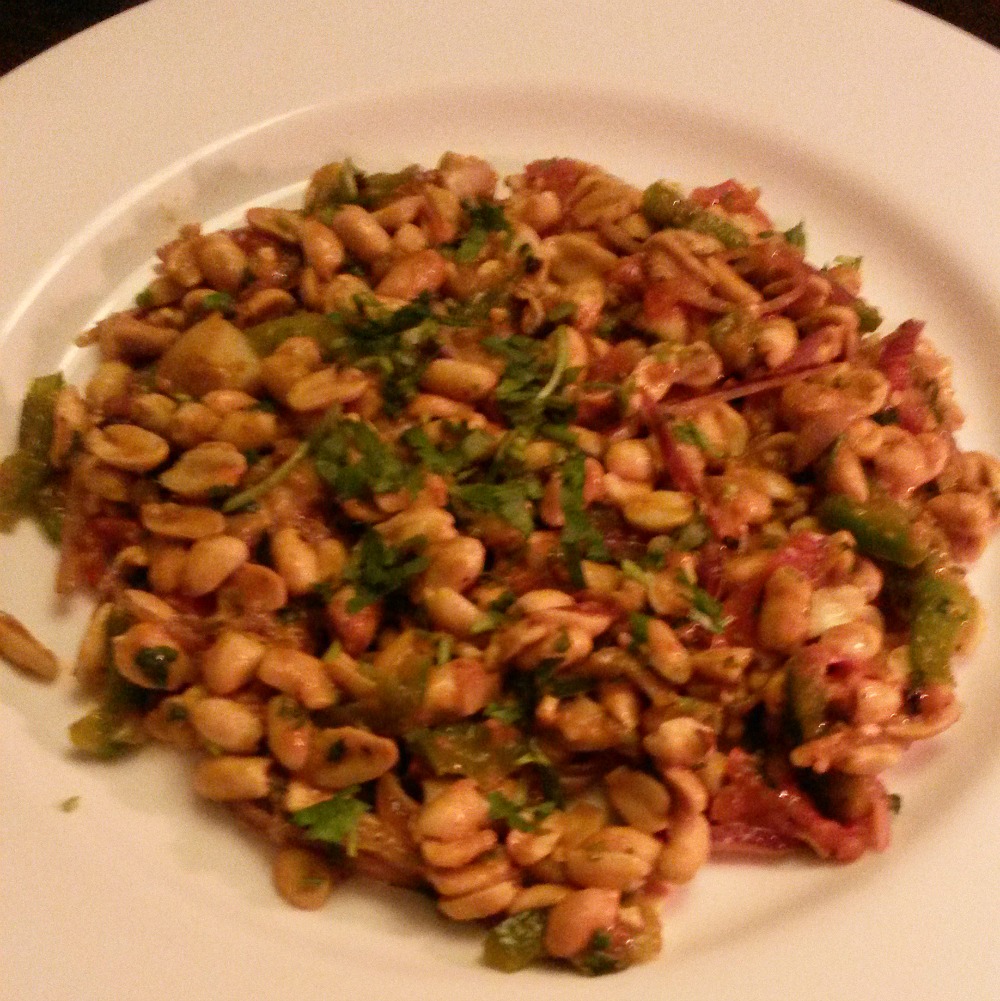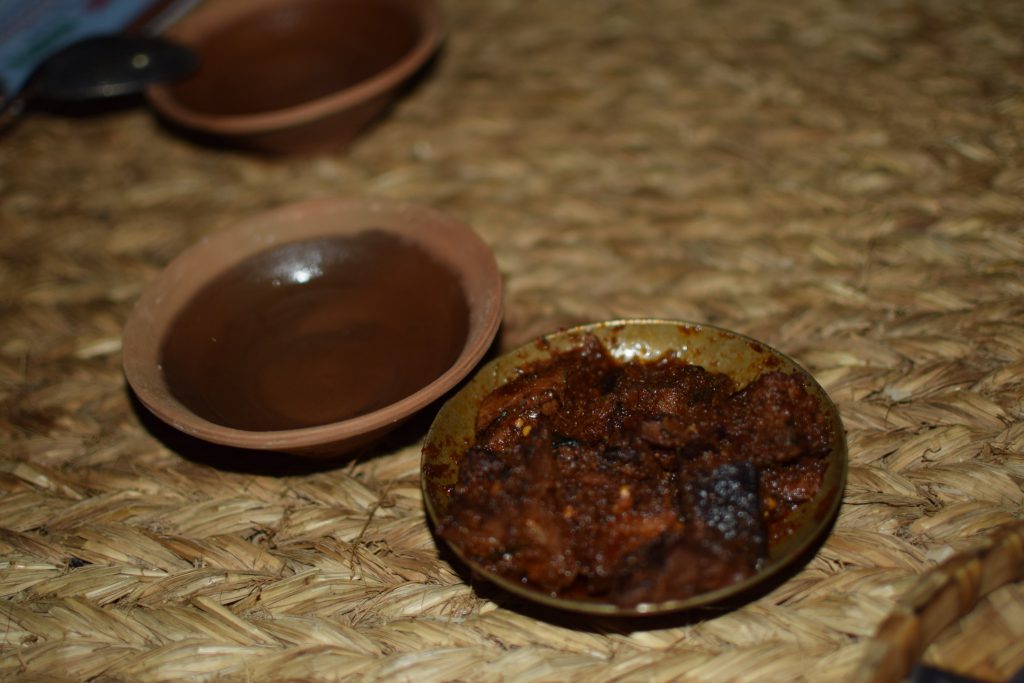
With its influence from both Indian and Tibetan dishes, Nepali cuisine is rich in flavours and aromas. Expect extensive use of rice, lentils, chickpeas, and corn, which makes it a culinary heaven for gluten-free dieters. Here are my recommendations for first-time visitors to Nepal, with all the dishes you can’t miss, all the drinks you have to sip, and all the foodie spots you have to visit.

Dal bhat is the most popular dish you’ll find in Nepal | Photo by Thei Zervaki
But first, a few basic food facts to remember:
Nepalis love — and eat daily, often twice a day — the traditional dish of dal bhat. It is served on a steel platter and is similar to Indian thali: in the middle, you’ll find steamed rice, a bowl of dal (a lentil soup), curried mixed vegetables, and a spicy sauce called achar. In restaurants, and among families who can afford it, the dishes are all paired with bowls of chicken or beef. To eat it, you pour the dal over your rice and carefully add the veggies and spicy sauce, kneading them into small-sized balls with your right hand. Once the ball is formed, you push it into your mouth with your thumb. (If you can’t master it, don’t worry — most foreigners eat each food separately or mix them altogether with a spoon.)

If you love peanuts, you’ll love masala chaat | Photo by Thei Zervaki
Momos, a Nepalese favourite, are said to have originated from Tibetan travellers and are served as an entrée or a main. Smaller than Chinese dumplings, momos are made with a white-flour dough, filled with vegetables, chicken, or buffalo meat, and steamed; they are often paired with a pickled sauce for dipping. In the areas close to Tibet, they are moon-shaped and often fried.
Peanut masala chaat is a popular salad dish. It consists of raw or roasted peanuts mixed and cooked with chopped onions, tomatoes, coriander leaves, and various spices such as cumin, chilies, and turmeric. If you love peanuts, you can’t go wrong with this dish!
The Newars, an indigenous group in Nepal, are known for their impressive 200-dishes cuisine. Chatamari, a flat crepe made with rice flour and topped with vegetables, yak cheese, eggs, and ground meat, is the Newari signature dish. So is baji, a dish made with beaten rice that looks like rolled oats served with vegetables and spicy sauce — the Newari version of dal bhat. Choyila is another dish, made with fried buffalo meat mixed with greens. If you’re not a fan of offal, be warned: Newari cuisine is known for using all the parts of an animal, including tongue, spine, bone marrow, and lungs. Another interesting snack, frequently paired with tea, is yomari, which is offered at festivals to thank the Gods for a good harvest. Shaped as a pointed fig and steamed, yomari is made with a rice-flour dough and filled with sugarcane molasses, ground sesame seeds, and coconut.

Can your palate handle buffalo tongue? | Photo by Thei Zervaki
In Newari areas, the most popular drinks are chhaang, a rice beer, and aylā, made from distilled rice and cereals. Raski is found in Kathmandu, is similar to tequila or sake, and is made from distilled rice or millet. Tongba is made from fermented millet served in a jug with a straw and with a flask of hot water: you pour the water in, let it steep, and suck the brew through the straw.
And then of course, one thing you can’t miss is Nepali tea, even if you’re an avid coffee drinker like me. A warm cup of their spiced black tea blended with milk and sugar (or just black) is what I would describe as the best comfort drink in the world, especially on a cold day.
In the capital of Kathmandu, there are plenty of touristy restaurants that you can easily find with a quick stroll or internet search. But I would avoid those restaurants as they don’t offer anything that you haven’t tried before. Do you really want to eat Greek salad or pad Thai in Nepal?
The Gaia Restaurant & Coffee Shop in Thamel offers local dishes for curious travellers but also an array of options for those who aren’t. If the weather is nice, you can sit on the patio. Or for a more local flavour, try the Tibetan café in Boudha called Double Dorje. You will find Tibetan breads and noodle soups.
The Asan Tole open-air market in Themal is a bustling market offering the best spices, pickles, herbs, nuts, molasses, and beaten rice and Nepali teas that you can find, as well as clothes, tea pots, and kitchenware. Pure Nepal Home Made Spices & Tea Center is a well-stocked spot in Thahiti Square in Kathmandu for tea and spices.

Hit up the markets for spicy finds | Photo by Thei Zervaki
For real Newari food, leave Kathmandu and instead visit the cities of Patan, Kirtipur, or Bhaktapur. In Kirtipur, the Newa Lahana restaurant offers amazing Newari food. But be warned, the windows are always open so dress warmly if you go in the winter.
If you can only afford one item, I’d recommend going for the spiced Nepali tea. When you make it back home, the smells and flavours of this vibrant country will transport you right back there in a cup. Spices and herbs from the Asan Tole market are another good option, but make sure you know your local import laws before you buy anything unsealed. And if you are patient enough to scout through shops and markets, you might find the perfect spice box container, the masala dabba, that you’ll find in every Nepali household.